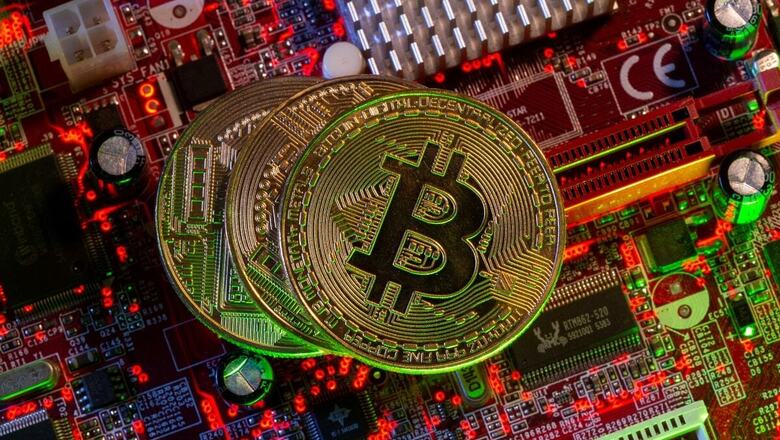
views
El Salvador, the first and only country in the world to accept Bitcoin as legal tender, is exploring whether energy from volcanoes in the country can be harnessed to power the mining of the cryptocurrency. On the other hand, China, the country where over half of all Bitcoin in the world is mined, has launched a crackdown on such operations with concerns over the amount of energy used
in the process. So, what is Bitcoin mining and how does it help miners collect the cryptocurrency?
What Is Bitcoin Mining?
Mining is a central operation in the Bitcoin universe as it not only facilitates the creation of new Bitcoin, but also keeps the entire Bitcoin system of recording transactions running. To process the dope on mining you have to first remember that Bitcoin is a decentralised currency, that is, it is not regulated by any central bank but is monitored by the community of people who hold Bitcoin. Again, although it is called Bitcoin, there is no actual coin, and one Bitcoin is basically some lines of computer code that create more code when it is sent to somebody or used to pay for anything.
What these lines of code track is who spent how much Bitcoin and whether the transaction was legitimate, since when we’re talking about data on a computer, it is easy to copy-paste the same with a view to spending the same amount multiple times.
Now, transactions using Bitcoin are recorded using what is known as blockchain technology. This involves adding groups, or blocks, of transactions to an online ledger that is visible to all computers — or nodes as they are called in the Bitcoin-verse — that are on the Bitcoin network. But these transactions cannot just be added to the ledger (called a decentralised ledger as not single entity controls the process of updating and maintaining it), they have to be verified before they are appended to the blockchain.
So far, so good, but you want to ask, what does all of this have to do with ‘mining’ Bitcoin?
Of Proof Of Work And Getting Rewarded In Bitcoins
Like we have already noted, a transaction involving Bitcoin isn’t automatically added to the blockchain. Addition to the blockchain is the condition for a transaction to be regarded as legitimate, but that can happen only when a majority of the computers on the Bitcoin network verify the transaction. Who gets to add a fresh block to the blockchain is the contest that leads to the creation of Bitcoin, or mining. Because to add a block to the blockchain requires the owner of a computer on the Bitcoin network to solve a complex mathematical problem.
Basically, the idea is to find a unique key that will allow a block to be added to the blockchain. This is the complicated proof-of-work system that underpins the process of verifying transactions. To find this key is a task that requires enormous computational power, which is why people who devote their resources to adding transactions to the blockchain are rewarded with new Bitcoin.
According to reports, in 2009 when Bitcoin lauched, mining one block would earn the miner 50 Bitcoin. In 2012, that came down to 25 Bitcoin because the Bitcoin platform has decreed that rewards for Bitcoin mining is to be reduced by half every four years. In May last year, the reward for adding a block was 6.25 Bitcoin.
Given that one Bitcoin is now worth about $40,000, mining one block means the miner can take home a close to quarter of a million dollars.
What Makes Mining So Energy Intensive?
The complex mathematical problem that miners need to solve requires more brute force computation than brains, literally speaking. That’s because the peculiar, or nonce, value that would enable a block of transactions to be added to a blockchain requires a trial-and-error approach. According to experts, “the odds of solving the problem are about 1 in 5.9 trillion”. Which means that computer processors have to be kept running through the day to scan all combinations for arriving at the correct key. That is also the reason why the reward for adding one block is so high.
But mining can’t be done with your basic home computer, or even a very good office computer. Bitcoin miners typically use powerful graphics processing units (GPUs), or what are known as application-specific integrated circuits, or ASICs. These can prove to be energy guzzlers. According to reports, one Bitcoin transaction takes 1,544kWh of energy, which is equivalent to power that can keep an average US household running for 53 days.
Read all the Latest News, Breaking News and Coronavirus News here.
















Comments
0 comment